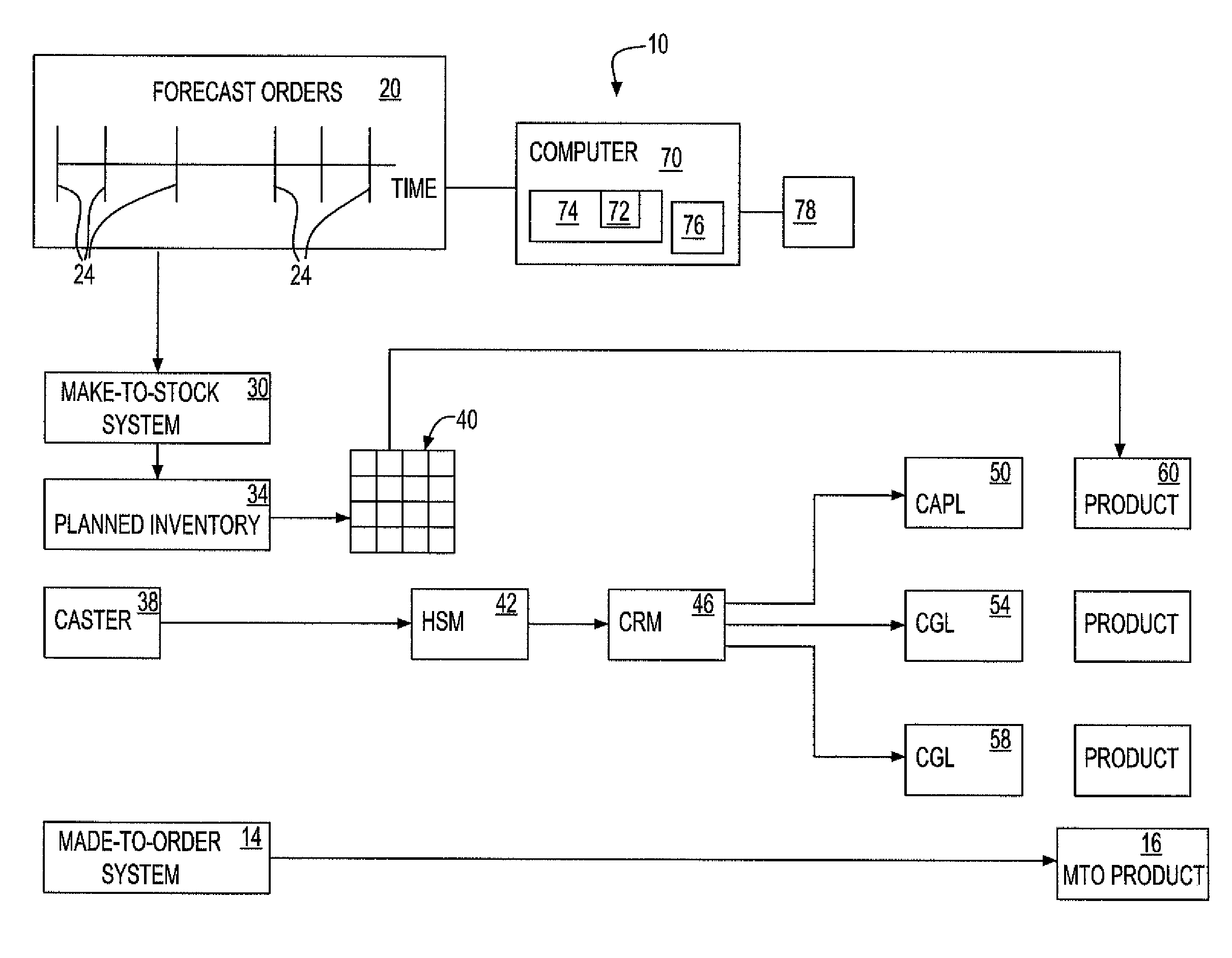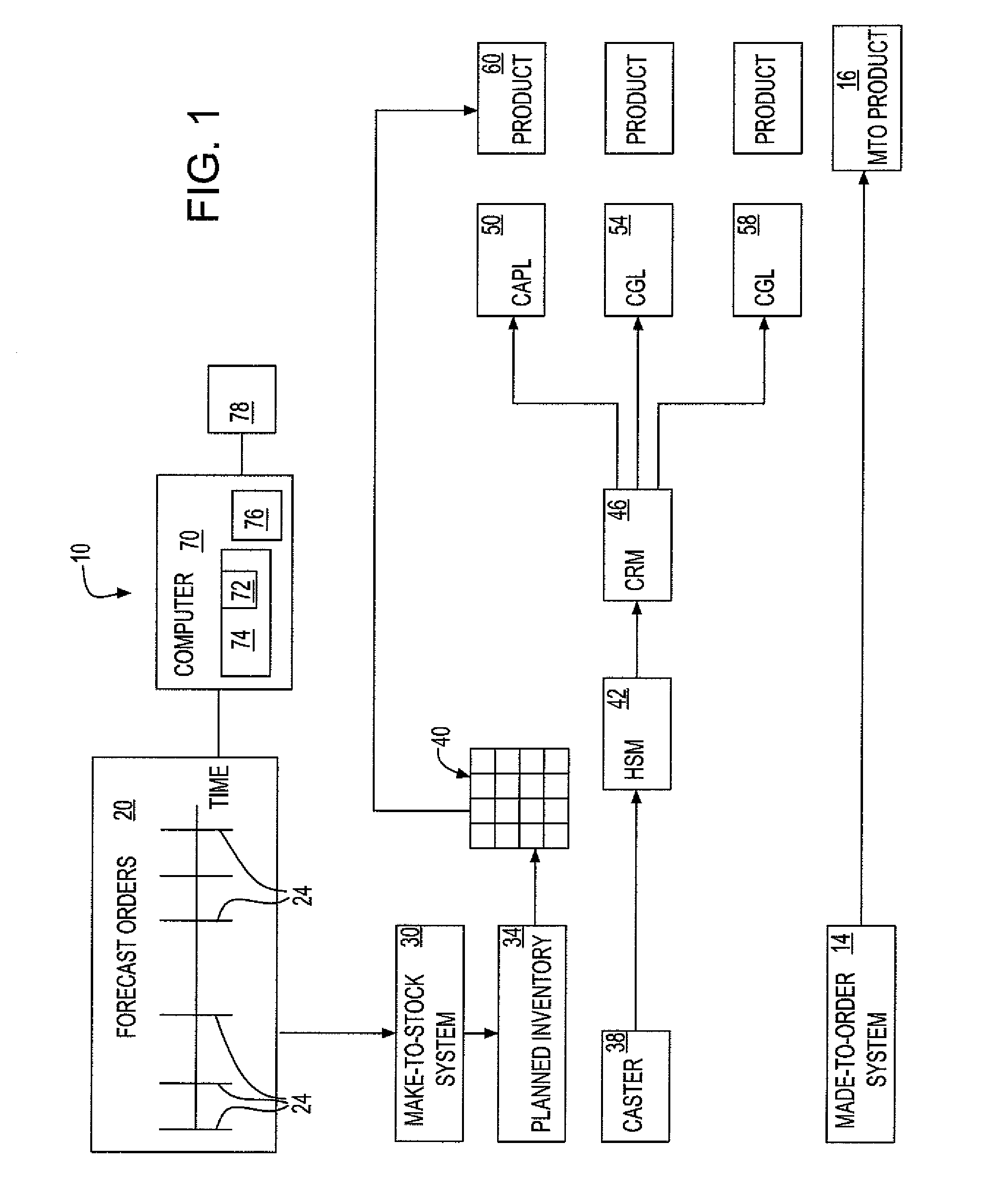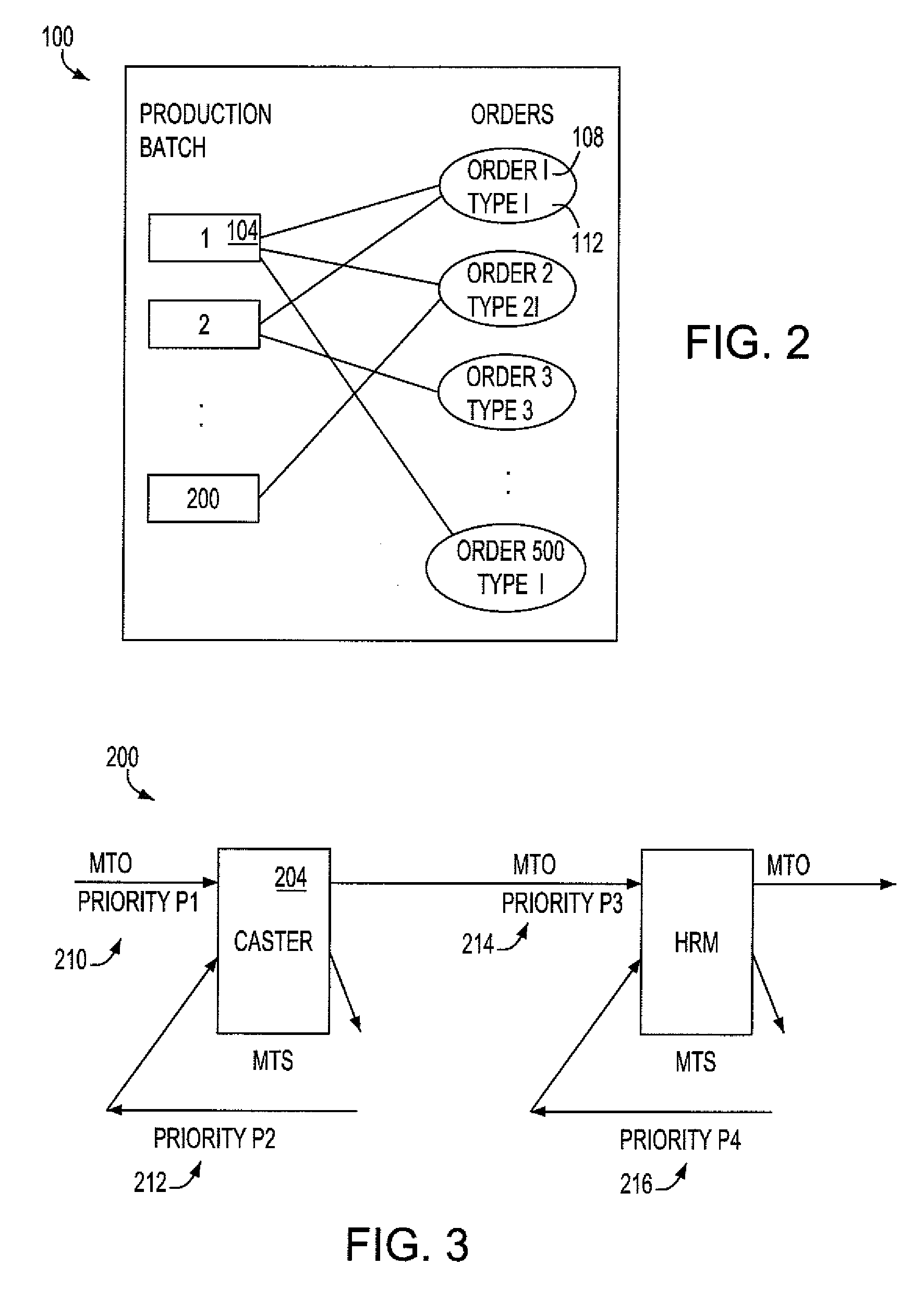Analytics for setting up strategic inventory systems to handle small lot orders in the steel industry
a strategic inventory and steel industry technology, applied in the field of managing manufacturing production, can solve the problems of large-scale production constraints, limited capacity of charging and casting stages, capital-intensive flat product rolling mills,
- Summary
- Abstract
- Description
- Claims
- Application Information
AI Technical Summary
Benefits of technology
Problems solved by technology
Method used
Image
Examples
Embodiment Construction
[0022]The method of the present invention uses a novel planning and production approach that allows made-to-stock (MTS) and made-to-order (MTO) for different product types on the same production facility to provide an optimized solution to the question of introducing small lot orders to steel producers' portfolios. The method considers multiple questions, including: which products should be made MTO and which MTS; how much inventory should be held on average; how should the various products be prioritized for service at the production facility; if the entire of production flow is considered (the multi-echelon production system), taking into account product-differentiation; and at which stages should MTS inventories be held; and how much inventory should be held on average.
[0023]Referring to FIG. 1, an illustrative embodiment of a method of manufacturing production 10 according to the invention includes a strategic inventory system for orders of steel, but may be applied to any produ...
PUM
 Login to View More
Login to View More Abstract
Description
Claims
Application Information
 Login to View More
Login to View More - R&D
- Intellectual Property
- Life Sciences
- Materials
- Tech Scout
- Unparalleled Data Quality
- Higher Quality Content
- 60% Fewer Hallucinations
Browse by: Latest US Patents, China's latest patents, Technical Efficacy Thesaurus, Application Domain, Technology Topic, Popular Technical Reports.
© 2025 PatSnap. All rights reserved.Legal|Privacy policy|Modern Slavery Act Transparency Statement|Sitemap|About US| Contact US: help@patsnap.com



